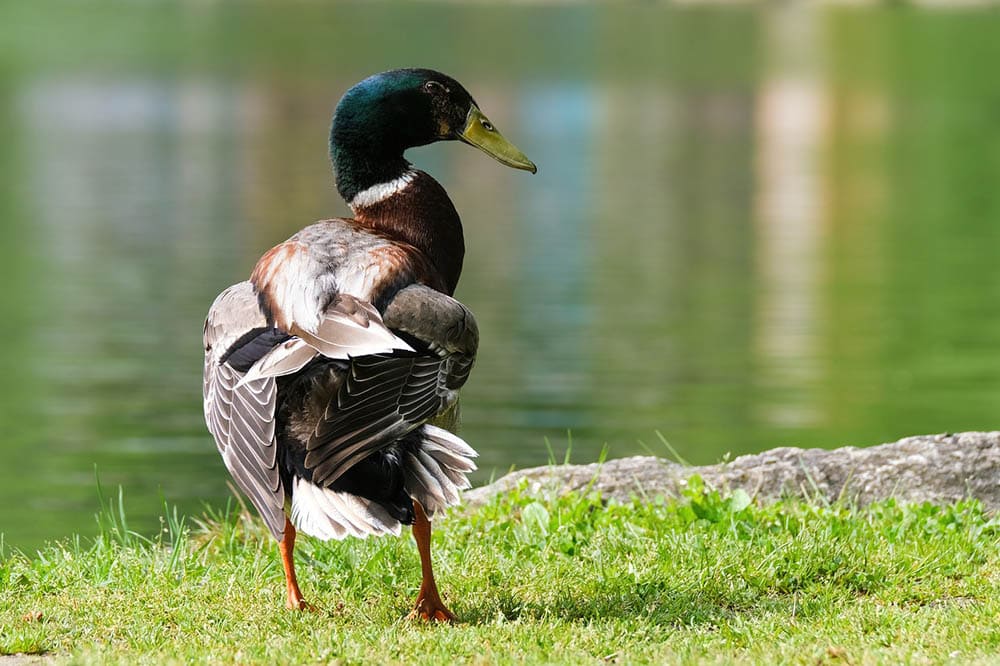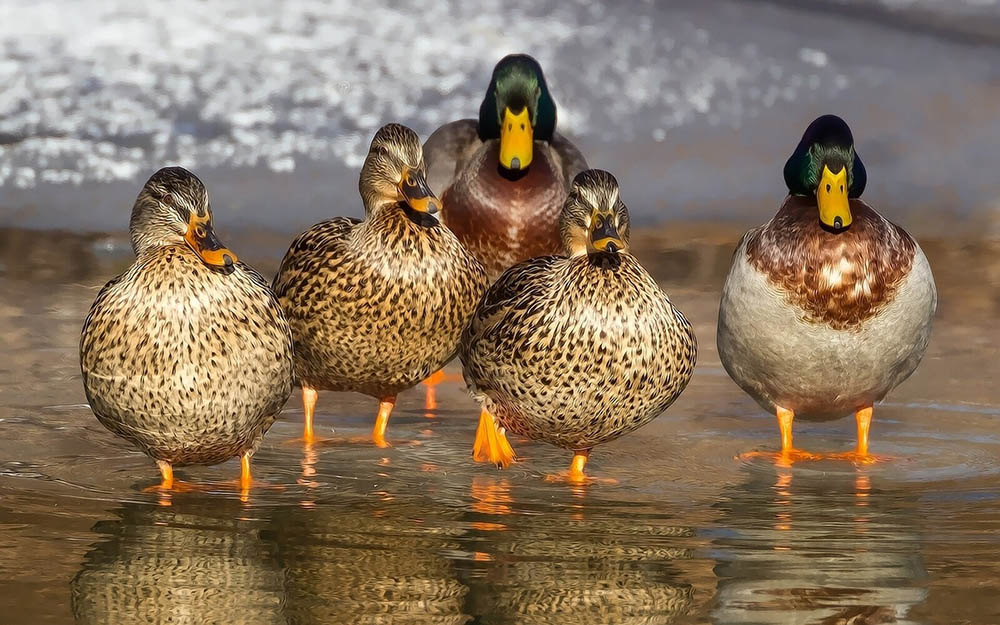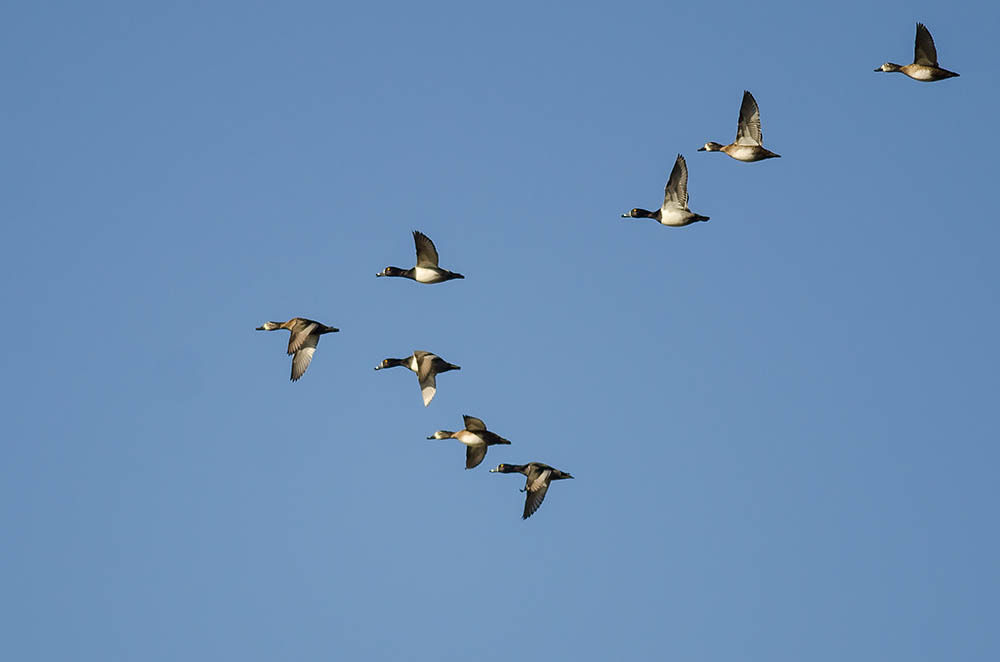Do Ducks Fly? How Does Duck Flight Work?
Last Updated on

Asking the question, do ducks fly may seem like a moot point. When cold weather approaches, according to the area where you live, you may get the opportunity to see ducks migrating for the winter. This is a phenomenal thing to see. Oddly enough, although most species of ducks can fly, not all of them do. Domesticated ducks and certain species who aren’t well equipped for flight, prefer to stay where they are. This is especially true if their food sources are good and they feel they are well cared for.
For the species of ducks that fly, which is the majority of them, understanding how duck flight works is not only interesting but important for anyone who tends to ducks around their home. Below, we’ll help you better understand how duck flight works and the species of ducks that are most likely to hit the sky when the time comes.

A Bit About Ducks
Ducks, which we often call waterfowl, are part of the family Anatidae. This family also includes geese and the beautiful swan. Within their family, most ducks fall into 3 categories. Dabbling Ducks include species such as Mallards and Garganey. Pochards and Scaups are part of the Diving Duck category. The final category, Sea Ducks, includes the Velvet Scoter and Red-breasted Merganser species.
Male ducks are called drakes. The females are hens. The babies they make together are their ducklings. While it’s clear which ones are the babies, there are a few tricks to tell the male ducks from the females. Drakes have feathers that are more colorful and quite beautiful. This is to help them attract a female when it’s time to mate. A female’s feathers are a bit more plain. This helps them blend into the environment better. This is especially helpful for mothers protecting their babies.

How Do Ducks Fly?
Now, onto ducks and their flying ability. While all ducks can fly thanks to their wings, not all do. This is often thanks to their size, weight, condition, and the structure of their wings. A duck’s wings are small in comparison to their bodies. These wings are slightly curved and have points at the end. While they use these wings to fly, thanks to their size, it takes a lot of flapping to keep their bodies in the air. To travel the long distances they do during migration, ducks must continuously flap their small wings.
To actually fly, ducks use powerful muscles in their wings. These muscles work along with primary flight feathers. These feathers give the ducks thrust when they are flapped. The primary flight feathers aren’t the only ones, however. Ducks also have secondary flight feathers they use to provide the lift they need for gliding.
Both sets of flight feathers work in cohesion with the waterfowl’s coverts. The coverts are softer than the other feathers and give the duck a smooth surface that helps get the most out of the airflow. Lastly, tail-feathers are a duck’s rudder and provide stabilization during flight. The use of all these feathers for flight is why when ducks are molting, ducks are unable to take flight for a few weeks.
Why Do Ducks Take Flight?
Other than Antarctica, ducks are found throughout the world. Considering ducks need to be near ponds, rivers, and streams when the weather gets colder, they need to look to greener pastures. This allows them to find food easier and survive when their normal habitat is colder.
Another reason ducks take flight and migrate is for breeding opportunities. Some species of ducks also migrate during mating season to build nests and lay their eggs. Doing both mating and egg-laying in warmer climates is a natural action of most species of duck.

Why Do Ducks Fly in Formation?
When ducks take flight, it isn’t unusual to see a flock of ducks flying in a V formation. You may be curious as to why this formation is preferred by these birds. It is due to energy. Flying in this formation helps the ducks conserve energy and use less energy during their migration.
The way these formations work is with a leader taking the helm. The other birds fly slightly above the one in front of them. With every bird in the formation flapping their wings, the air comes off its wingtips. That air helps each bird conserve a bit of energy and at points, in the flight, they may even experience a free ride. Throughout the trip, the leader of the formation trades out. This allows each one the chance to conserve a bit of energy while they migrate.

Final Thoughts on Ducks and How They Fly
Do ducks fly? Yes, they fly. Their ability to fly and how it is done is one of nature’s coolest works of art. Ducks use their small wings and their different types of feathers to stay in the air, working continuously to reach their destination. Whether you are a fan of ducks, or someone simply curious about how it all worked, knowing how these small creatures work so hard to reach their destinations is information everyone should know.
Featured Image Credit: NickyPe, Pixabay
About the Author Robert Sparks
Robert’s obsession with all things optical started early in life, when his optician father would bring home prototypes for Robert to play with. Nowadays, Robert is dedicated to helping others find the right optics for their needs. His hobbies include astronomy, astrophysics, and model building. Originally from Newark, NJ, he resides in Santa Fe, New Mexico, where the nighttime skies are filled with glittering stars.
Related Articles:
10 Types of Hummingbirds in Arkansas (With Pictures)
8 Types of Hummingbirds in Nebraska (With Pictures)
5 Types of Hummingbirds in Idaho (With Pictures)
3 Types of Hummingbirds in Mississippi (With Pictures)
8 Types of Hummingbirds in Kansas (With Pictures)
5 Types of Hummingbirds in West Virginia (With Pictures)
5 Types of Hummingbirds in Ohio (With Pictures)
Where Do Nuthatches Nest? Nuthatch Nesting Habits Explained
